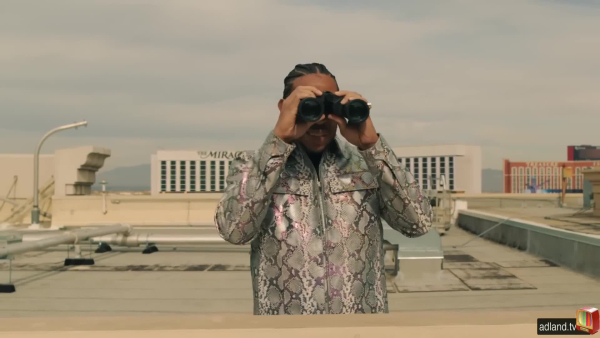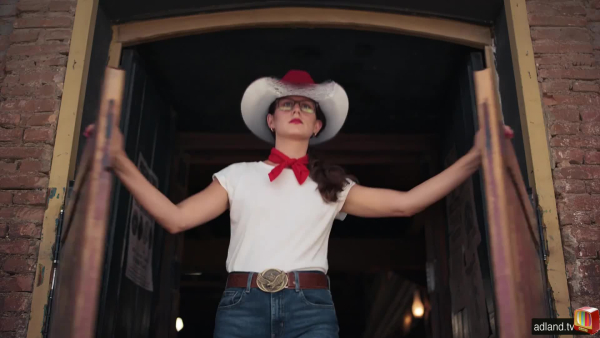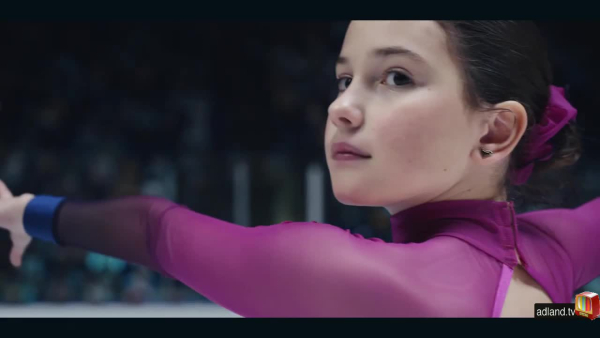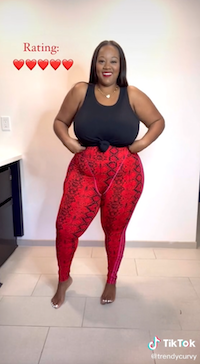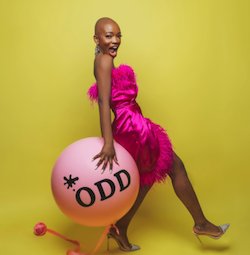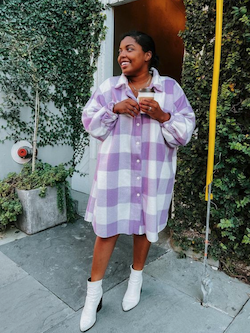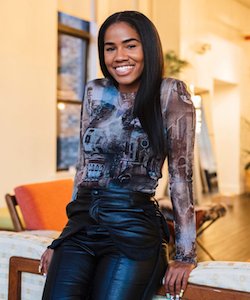Introduction: Your Place in the Media Universe
The media sector is a multi-faceted arena teeming with many career opportunities. It’s a realm where creative ingenuity meets technical prowess, resulting in the production of impactful content. Whether you’re an artist at heart, a techie with an eye for detail, or a wordsmith looking to capture the zeitgeist, the media universe is vast enough to accommodate a range of talents and ambitions. This field doesn’t just offer jobs; it provides vocations, quests, and causes.
Whether your goal is to disseminate crucial news, entertain millions, influence public opinion, or perhaps even disrupt traditional media paradigms, there’s likely a career in media that aligns perfectly with your skill set and aspirations.
We had some fun with this article and renamed many media professions with slightly silly job titles – they are meant to help distill what the position does and help you grasp the deeper meaning behind the job!
What’s the Buzz in the Media Sector?
The media landscape is in constant flux, evolving and adapting rapidly in today’s ever-changing world and heading off accusations of being polarizing. Long-standing pillars like journalism and advertising intersect with emerging channels like social media, content platforms, and direct-to-consumer streaming services. New technology—such as virtual reality, blockchain, and artificial intelligence—is reshaping how we create, distribute, and consume content. This includes anything from interactive journalism pieces that place the reader in the heart of the story to algorithm-driven marketing campaigns designed to reach a hyper-targeted audience.
Yet, amidst all these changes, the core mission of the media remains steadfast: to create resonant content that informs, entertains, or persuades. This could mean producing investigative journalism pieces that provoke thought, advertising campaigns that drive consumer action, or multimedia stories that capture hearts and minds.
These expansions are driven by an unwavering essence at the core of all media endeavors—the endeavor to create content that strikes a chord with its intended audience. While the mediums may change, this central principle of media careers endures, offering a stable foundation upon which anyone entering the field can build their career.
This blend of old and new, timeless principles and cutting-edge technologies makes the media sector one of the most dynamic and exciting fields. Whether you are a seasoned veteran contemplating your next career move or a newcomer eager to make your mark, understanding the various roles and opportunities available can be the first step in your next fulfilling career adventure.
Learn more about the aspects of media jobs to see which resonates with your natural interests and abilities!
Your Career Map: 12 Key Media Roles and What They Entail
1. Reputation Engineer (Publicist)
Main Responsibilities and Insights:
- Publicists act as gatekeepers between their clients and the public, shaping perception through strategic communications.
- Crisis management is a critical skill. When unfavorable situations arise, quick and effective messaging can mitigate damage.
- Publicists often juggle multiple clients, necessitating exceptional organizational and multitasking skills.
A Reputation Engineer, commonly known as a Publicist, is no longer just a behind-the-scenes operator sending press releases and arranging interviews. In today’s interconnected and rapidly changing media environment, they are strategic architects of a client’s public persona. Their expertise extends to shaping narratives, crisis management, and content creation. They often work closely with a multi-disciplinary team that includes social media managers, legal advisors, and marketing professionals to execute a cohesive brand strategy.
While traditional media relations remain a cornerstone, a modern publicist is proficient in digital platforms, utilizing SEO practices to optimize press coverage and employing social media channels to engage with the audience directly. They are often tasked with real-time analytics monitoring to gauge public sentiment and media impact, allowing dynamic strategy shifts. A Reputation Engineer serves as a guardian and strategist of a client’s public image, whether that client is an individual, a corporation, or even a nonprofit organization. With the convergence of various forms of media and an increasingly skeptical public, the role demands a unique blend of creativity, analytical thinking, and an intimate understanding of the ever-shifting media landscape.
Main Responsibilities and Insights:
- Photographers don’t just click pictures; they tell stories through visuals.
- Specializations abound, from photojournalism and event photography to commercial and fashion photography.
- Mastery of editing software like Adobe Photoshop and Lightroom is often necessary for post-production modifications.
The role of an Image Curator, commonly known as a Photographer, goes beyond merely clicking a shutter button. Today’s photographers are visual storytellers and brand builders responsible for translating a concept or narrative into compelling imagery. Their work starts long before the photoshoot, during the conceptualization and planning stages. They scout locations, assess lighting conditions, and collaborate closely with art directors, designers, and even marketing teams to ensure that the visuals will serve the broader goals of a project or campaign. In the age of digital media, photographers also need a firm grasp of post-production software like Adobe Photoshop and Lightroom, using these tools to enhance images or even create composite visuals that might be impractical to capture in a single shot.
Moreover, photographers are increasingly taking on roles traditionally in the domain of other professionals, such as video production and drone operation, making versatility a valued trait. Beyond the technical skills, an adept photographer possesses a keen eye for detail, artistic sensibility, and the interpersonal skills necessary to put subjects at ease. In a world increasingly driven by visual content, the Image Curator is pivotal in shaping public brand identity and influencing social change.
Main Responsibilities and Insights:
- Anchors are responsible for accurately and articulately delivering news to the public as the face of a news channel.
- Constant engagement with current affairs is crucial. Anchors often prepare their own scripts, sometimes under tight deadlines.
- The role involves behind-the-scenes coordination with newsroom staff, ensuring factual consistency and smooth flow during live broadcasts.
In the ever-evolving media landscape, the role of a television news anchor has expanded far beyond the traditional duties of presenting news and reading from a teleprompter. Anchors today are multi-skilled professionals expected to bring journalistic integrity, a strong screen presence, and a depth of knowledge. They are often involved in the pre-production phase, which includes participating in editorial meetings to shape the day’s news agenda and suggest stories that reflect current events or community concerns.
Modern anchors also leverage social media platforms’ power to engage directly with viewers, offering additional commentary, behind-the-scenes looks, or addressing questions and concerns in real-time. The role may extend to field reporting, special series segments, and in-depth interviews, requiring a broad skill set ranging from live reporting insight to research and investigative skills. In a sense, anchors are becoming brand ambassadors for their respective news stations, as their credibility and relatability often influence viewer trust and viewership numbers. With various formats like live-streaming and 24-hour news channels, the demand for anchors adeptly navigating these multiple roles is higher than ever.
Main Responsibilities and Insights:
- Beyond just cutting and splicing, video editors play a pivotal role in storytelling through visual sequences.
- They must handle various software, including Final Cut Pro and Adobe Premiere Pro.
- Collaboration with sound designers, colorists, and other specialists is often necessary to create a finished product.
A Visual Narrator, also known as a Video Editor, is not just a technician who cuts and splices footage, but a storyteller who shapes a video’s emotional and intellectual impact. The video editor role has evolved to be multifaceted, encompassing traditional editing and elements of sound design, color grading, and visual effects. The editor often collaborates directly with directors, producers, and composers to ensure the final product is cohesive and resonant. With the advent of technologies like 4K, 8K, and virtual reality, the complexity and required expertise in video editing have increased dramatically. Mastery of software such as Adobe Premiere Pro, Final Cut Pro, and Avid Media Composer is a given. Still, many editors are proficient in compositing software like Adobe After Effects and audio software like Adobe Audition.
Additionally, editors often work on tight deadlines in today’s fast-paced content cycle. They may be called upon to make last-minute changes to accommodate new information or feedback, requiring skill, adaptability, and grace under pressure. As platforms for video content proliferate, from social media snippets to feature-length films, the Visual Narrator plays a crucial role in ensuring that stories are told in the most engaging and impactful way possible.
Main Responsibilities and Insights:
- Media Planners need a thorough understanding of the client’s industry and the media landscape.
- Advanced analytical tools are frequently used to gauge the effectiveness of media campaigns.
- They are crucial in steering the client’s budget toward the most impactful media channels.
The Outreach Optimizer, known in traditional terms as a Media Planner, has evolved into a role far beyond selecting the right media outlets for advertisement placement. In an age where the consumer is bombarded by content across multiple platforms, this professional acts as a crucial linchpin in creating a holistic customer journey. Armed with data analytics and an understanding of consumer behavior, they strategize not only the ‘where’ but also the ‘when’ and ‘how’ of message delivery. Whether coordinating multi-channel campaigns that span social media, print, and out-of-home advertising or segmenting audiences for targeted messaging, the Outreach Optimizer works at the intersection of creativity and analytics.
They collaborate closely with brand strategists, creatives, and data scientists to construct a coherent and effective media plan. Tools like programmatic buying, retargeting strategies, and real-time bidding are part of their modern toolkit. With consumer attention becoming increasingly scarce, the role demands an acute understanding of metrics, from click-through rates to engagement scores, to ensure ROI-positive outcomes. As augmented reality and voice search trends emerge, the Outreach Optimizer is consistently on the front lines, navigating the ever-changing landscape to capture audience attention effectively.
Main Responsibilities and Insights:
- Graphic designers often work with marketing teams to create visual assets that align with campaign goals.
- Versatility is key, with the medium ranging from digital ads and website layouts to print brochures and merchandise.
- Proficiency in design tools like Adobe Illustrator and InDesign is typically required.
Traditionally known as a Graphic Designer, the Visual Architect has transcended the realms of merely being a creator of logos or posters. In today’s interconnected world, their work is the visual cornerstone of a brand’s identity, existing across multiple platforms and media types, from mobile apps to billboards. The graphic design role is about solving problems through visual storytelling, employing a blend of artistic ability and strategic thinking. They must master multiple tools and languages such as Adobe Creative Suite, CSS, and HTML. Their work doesn’t end at aesthetic appeal; it extends to user experience and interface design, requiring a deep understanding of human psychology to create intuitive and engaging layouts. They often work with content creators, web developers, and marketing teams to bring a cohesive visual narrative to a brand’s messaging.
The Visual Architect also plays a significant role in content marketing, creating infographics, social media assets, and video graphics that enhance consumer engagement and comprehension. As new technologies like augmented reality and virtual reality enter mainstream use, these professionals are charged with integrating these elements into a broader visual strategy. They must keep pace with rapidly evolving design trends, software capabilities, and consumer preferences, making continuous learning and adaptation their constant companions.
Main Responsibilities and Insights:
- Beyond SEO and social media management, Digital Marketers often delve into PPC advertising, email marketing, and AI-driven customer segmentation.
- Continuous learning is crucial due to ever-changing algorithms and audience preferences.
- Digital Marketers often employ A/B testing methods to refine their strategies continuously.
The Digital Evangelist, commonly called a Digital Marketer, is the vanguard of a brand’s online presence, leveraging many tools and platforms to connect with potential customers in the digital realm. Gone are the days when this role solely involved setting up a few PPC campaigns or sending out an email newsletter. Today’s Digital Evangelist must be a jack-of-all-trades, fluent in SEO, content marketing, social media management, and data analytics. They utilize deep insights from metrics and KPIs to tailor strategies beyond driving traffic, focusing on conversion optimization and customer retention. This role often requires a symbiotic relationship with other departments like sales, customer service, and IT to create a seamless online experience that reflects the brand’s values and meets business objectives.
With trends like AI-driven marketing automation, chatbots, and personalized user experiences shaping the digital landscape, the Digital Evangelist is tasked with staying ahead of the curve, constantly updating their skill set and toolkit. A keen understanding of consumer behavior online, such as the customer’s path to purchase, is critical. They must be adept at A/B testing and funnel optimization and must have the foresight to adapt strategies in real time to meet the ever-changing demands and trends of the digital space.
Main Responsibilities and Insights:
- It’s not just about posting updates. Social Media Managers often employ advanced analytics to understand engagement patterns.
- They are responsible for reputation management on social platforms, including handling customer complaints or queries.
- Content calendars are often used to maintain a consistent posting schedule.
The role of the Community Maestro, also known as a Social Media Manager, has evolved into a multifaceted position that extends beyond mere post-scheduling or follower counts. In today’s digital landscape, this individual is essentially the brand’s voice, crafting its personality and maintaining its reputation across social platforms. This role demands a deep understanding of analytics to drive strategic decisions, going beyond vanity metrics to focus on actionable insights like engagement rates, customer sentiment, and click-through ratios. As is crisis management, real-time communication with followers is essential; a single misstep can become a PR fiasco in today’s fast-paced social media environment.
The Community Maestro often collaborates closely with other departments—particularly customer service, PR, and marketing—to ensure brand consistency and to capitalize on cross-promotional opportunities. They are also usually involved in the creativity and execution of social media campaigns, whether for product launches or social causes, leveraging each platform’s unique features and audience behaviors for maximum impact. Content curation plays a big role, often involving a mix of video, text, and interactive elements to keep the community engaged. With emerging technologies like live streaming, chatbots, and augmented reality filters becoming increasingly integral to social media, the Community Maestro must be agile and proactive, constantly staying ahead of trends to keep the brand relevant and engaging.
Main Responsibilities and Insights:
- Content Strategists do more than align blog posts with business goals; they are often at the helm of a brand’s entire content ecosystem.
- Skills in SEO, user experience (UX), and even basic coding can give content strategists a significant edge.
- They often conduct extensive audience research to ensure that content reaches the most relevant demographics.
The role of a Content Orchestrator, better known as a Content Strategist, goes beyond just creating compelling content; it’s about weaving a cohesive narrative across multiple platforms and formats. Operating at the intersection of creativity, analytics, and technology, this role necessitates a multi-faceted skill set. Content strategists are responsible for understanding their audience’s behavior, needs, and pain points, usually through data analysis and customer research. Based on this understanding, they curate a content calendar, dictating what gets published, when, and where. But the job doesn’t end there. The Content Orchestrator also collaborates closely with various departments like marketing, sales, and customer service to align the company’s messaging and ensure that the content achieves its desired impact, be it increased engagement, lead generation, or customer retention.
Moreover, they are often responsible for measuring the ROI of their content strategies using metrics such as engagement rates, conversion rates, and customer lifetime value. The rise of AI and machine learning tools has equipped Content Strategists with predictive analytics, allowing them to anticipate market trends and consumer needs, thereby always staying one step ahead. Furthermore, they play an instrumental role in crisis management, brand positioning, and even mergers and acquisitions, as the content they produce or oversee serves as the public voice of the organization. This role has also grown to focus on ethical considerations like inclusivity and sustainability, as modern consumers demand that brands be socially responsible. Overall, the Content Orchestrator is much more than a planner; they are the puppeteers of a brand’s digital persona, pulling all the right strings to create a harmonious user experience.
10. Story Explorer (Journalist)
Main Responsibilities and Insights:
- Journalists serve as the pillars of democratic societies, often risking personal safety for the truth.
- Different beats like politics, technology, and healthcare require varying expertise and knowledge.
- Digital journalism has introduced new skills, like multimedia reporting and data visualization.
The Story Explorer, commonly known as a Journalist, serves as a conduit for information, acting as investigator and storyteller. This role has dramatically evolved with the proliferation of digital media; journalists no longer solely write for print or broadcast but often create multimedia content that includes video, audio, and interactive elements. A journalist’s responsibilities range from local to global issues, requiring versatility and the ability to adapt to different topics and audiences quickly. The Story Explorer is expected to have a keen nose for news and an insatiable curiosity. Research skills are paramount, as is the ability to quickly synthesize complex information into easily digestible, yet comprehensive reports. In today’s world of ‘fake news’ and misinformation, a commitment to ethics and integrity is more critical than ever, making fact-checking and source verification crucial aspects of the job.
Moreover, they often work under tight deadlines, requiring exceptional time management skills. Social media has also become an indispensable tool for modern journalists, both as a source of information and as a platform for disseminating stories. Audience engagement is now a significant aspect of the role, requiring journalists to monitor and interact with their readership, understand analytics, and sometimes even serve as their own social media managers to build a personal brand that complements their primary work. With the rise of citizen journalism and user-generated content, professional journalists are increasingly tasked with curating and contextualizing information, serving as a filter to bring the most accurate and relevant stories to the public eye.
Main Responsibilities and Insights:
- Film Directors are the creative spearheads of any film project, but their role also involves significant managerial tasks.
- They liaise with producers on budget concerns, coordinate with casting directors, and provide feedback during the editing process.
- A deep understanding of storytelling techniques, camera work, and even acting methods often sets apart great directors.
The Narrative Captain, or Film Director, is the fulcrum of any cinematic endeavor, orchestrating the elements that transform a script into a living, breathing story. This role is as much about leadership as it is about artistic vision, requiring the ability to manage a large and diverse crew while maintaining the integrity of the film’s core message. In the pre-production stage, the director is intimately involved in script development, casting, location scouting, and budget planning, ensuring that the foundational aspects of the film align with their creative vision. Once shooting begins, they guide the cast and crew through the meticulous details of each scene, from the nuance of an actor’s expression to the intricacy of a camera angle.
They make pivotal decisions in real-time, always balancing the need for artistic expression against time and budget constraints. In post-production, their role shifts to collaboration with editors, sound designers, and visual effects artists to refine the film into its final form. The director is often the spokesperson for the project, responsible for presenting it to investors, stakeholders, and eventually, the audience. With the advent of digital platforms and the increasing importance of global markets, the role has expanded to encompass a strong understanding of technology and cultural nuances. They must adapt their techniques for different formats, such as streaming services or interactive experiences, and consider how storytelling elements will resonate with international audiences. As a custodian of both artistic and emotional impact, the Narrative Captain bears the weight of the film’s success or failure, making it a role for those with both artistic aspirations and a robust sense of responsibility.
12. Aesthetic Director (Art Director)
Main Responsibilities and Insights:
- Art Directors are not just about aesthetics; their choices can significantly influence a brand’s perception and bottom line.
- They often have a hand in selecting other key creative team members, influencing the entire creative process.
- Budget management and timeline adherence are often as crucial as creative vision.
The Aesthetic Director, or Art Director, serves as the keystone of the visual experience in any media or advertising campaign, setting the artistic tone and visual narrative. This is a role of leadership and vision, where one oversees a team of designers, illustrators, and other creative professionals to achieve a unified look and feel across all project components. Their duties extend from the conceptual phase, where they are integral in shaping the foundational ideas, to execution, where their keen eye for detail ensures every element meets the project’s high-quality standards. They often liaise between the creative team and the client or upper management, translating business objectives into innovative strategies.
With the rise of digital media, Art Directors increasingly engage with interactive design elements, ensuring a cohesive visual experience across both physical and digital platforms. They make data-driven decisions, employing A/B testing, heatmaps, and user feedback to refine designs. They also ensure brand consistency across various projects and often have a significant say in hiring decisions within the creative team. Ethics and sustainability have become growing considerations in this role, as consumers increasingly demand brand transparency and social responsibility. As a result, modern Art Directors need to be well-versed not just in creating appealing designs, but also in understanding broader cultural and social implications of their work. From print and broadcast to online and mobile interfaces, the Aesthetic Director crafts the visual language that helps sell a product or idea and build lasting emotional connections with the audience.
Mapping Your Journey in Media Careers
In the sprawling universe of media careers, each position is a singular star and a part of constellations—interconnected yet highly specialized. The industry offers an intriguing blend of creative and technical roles, each replete with unique challenges, opportunities, and rewards.
Whether you’re just embarking on a career in the media sector or pondering a strategic pivot, understanding the multifaceted nature of these media careers will guide your decision-making and empower you to carve out your own distinct pathway. Remember, your aptitude for adaptation could become your most vital asset in an industry defined by constant evolution and driven by technology.
So, as you explore these diverse media careers, equip yourself with the insights, skills, and courage to make your next professional leap. Your perfect role is out there, waiting for you to seize it!


